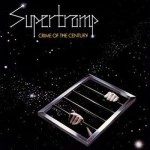
More of the Music of Supertramp
Reviews and Commentaries for Crime of the Century
[This commentary is well over ten years old, so take it with a grain or two of salt.]
AMAZING White Hot Stampers for the greatest Ken Scott production in history. This is his (and the band’s) MASTERPIECE, and now we have a pressing that allows us to revel in the GLORY that is Crime of the Century!
We played a KILLER MoFi pressing many years ago. (Yes, we admit it. As much as we dislike most of their records, the truth is the truth. Some can actually sound good. You can count them on the fingers of one hand, but they do exist.) This bit of commentary from the Hot Stamper MoFi shootout we had done previously discusses some of its characteristic traits:
How About the Brit Copies?
If one were to pick some nits, one could say that it’s still a tiny bit hot around 6k. The reason I know that is because the early British pressings have a smoother midrange compared to practically anything else out there. You may have noticed that good British copies never make it to the site, and there’s a simple explanation for that. Most early British copies (and later ones too) just do not sound good. On top of that, they are rarely quiet enough to play and enjoy. I can’t tell you how many British COTC pressings I’ve heard in the last 5 years that didn’t sound good or were noisy and groove damaged. But it’s a lot.
We get these MOFIs in on a regular basis, and they usually sound as phony and wrong as can be. They’re the perfect example of a hyped-up audiophile record that appeals to people with lifeless stereos, the kind that need amped-up records to get them going.
Listen to the vocals at the end of Dreamer. If they are bright, the bells at the end of the song sound super-extended and harmonically rich. But at what price? The vocals are TOO BRIGHT. Which is more important: good vocals or good bells? There has to be a BALANCE. This is something audiophiles and audiophile labels — even worse, they should know better — often have trouble understanding.
Things Have Changed
As we never tire of saying, in audio, if you’re doing it right, things change. With better cleaning technologies, better playback, better all the other stuff we talk about on the site, records that used to be practically impossible to get to sound right can suddenly — if a year or two of hard work and experimentation can be considered “sudden” — start to come alive and show us the MAGIC that’s been locked away for all this time inside their grooves.
To Quote The Rutles, Let’s Be Natural
Case in point: The vocals here sound AMAZING — natural and correct with lots of texture. Even the best MoFi copies are going to sound a bit phony when played against a killer copy such as this. Of course it’s a high-definition, high-resolution sound cut with super low distortion; it has to be to sound this good. Folks, this is the copy that lets you appreciate every last detail of the recording without hitting you over the head with “sonic effects”. It’s musical in a way that no audiophile pressing ever seems to be.
And of course the bass is AWESOME. Loud levels and big woofers will have your house quaking. Add to that the kind of ENERGY that the best pressings have in their grooves and you have an album that is guaranteed to bring the average audiophile system to its knees, begging for mercy. This is The Audio Challenge before you. If you don’t have a system designed to play records with this kind of SONIC POWER, steer clear of Crime of the Century. It wants to rock your world, and that’s exactly what Hot Stamper pressings like this one are here to do.
It’s ALIVE! It has BIG, PUNCHY sound that will fill up your living room and then some. It’s exceptionally transparent with superb clarity and lots of extension on the top end. (The typical Brit copy is dull, and that quality just takes all the magic out of the recording. The three dimensional space and clarity of the recording rely heavily on the quality of the top end. The MoFi, on the best copies, shows you what is missing from the typical Brit, domestic or other import LP. This is what impressed me back in the ’70s when I bought my MoFi. It was only years later that I realized what was missing and what was wrong.)
Last time around the best copies were British. That was NOT the case this time except on side two, where one British copy was competitive, but not better than, our best domestic pressing.
Side One
White Hot A Triple Plus Sound! BIG and BOLD like crazy. When track one finishes you will ask yourself, as we did, “how can it get any better?”
The answer will come quickly enough. Track two has a bit of edge to the vocals in some places, but with MONSTROUS size and energy, and prodigious bass power, we still had to call it A+++. It’s not perfect but it is so amazing that picking nits simply misses the point. This side is ALIVE.
Side Two
Side two gets rid of any edge problems in the vocals — the sound is exceptionally full and rich, with HUGE and solid drums like practically none you have ever heard. (Ken Scott can record toms like nobody else in the studio. If you have the system to play it, this album is all the proof you will ever need.)
Huge amounts of space, the MOST top end extension and the LEAST phony sound of any copy we played make this a side two that simply cannot be beat. One Brit copy was as good, albeit in different ways of course, but no copy was better.
The Most Successful Rock Concept Album of All Time
We consider Crime of the Century one of the most incredible musical and sonic journeys your audio system can take you on. It’s the Most Successful Concept Album of all time. Dark Side of the Moon or The Yes Album are two other productions that rise to this level, and as much as I love those albums, I actually think this is the best of the three, if for no other reason than that the tragedy of the story here is more emotionally compelling.
It’s also AN AUDIOPHILE’S DREAM COME TRUE (to quote the motto of a famous audiophile label). The creation here of a huge Cinerama-like soundscape is on a scale that few recording engineers would ever attempt, let alone achieve with such success. This is a Big Speaker record if ever there was one.
Those of you who’ve watched the site for ages know this, but it bears mentioning — we almost NEVER have Hot Stamper copies of this album available. The first and only White Hot Stamper copy went up back in 2007 (!). Here’s what we wrote in 2007 about COTC:
We actually attempted an all-day shootout late in 2007 that we had to abandon after every copy we played — without exception mind you — either sounded bad or was too noisy to sell. We must have tried at least ten good looking British pressings only to come up empty handed at the end of the day. The Speakers Corner pressing beats the average original, I can tell you that without fear of contradiction. (Of course all SC copies are going to sound different; perhaps our review copy is one of the Hot ones.)
(The bit about the Speakers Corner pressings sounding different has now been proven beyond any doubt; the copy we cracked open for this shootout didn’t sound nearly as good as the one we played in 2007.)
Ken Scott
In 2008 I had the opportunity to hear Ken Scott speak at an AES meeting here in Los Angeles. This is the man who recorded some of the All Time Great Rock Albums, the likes of Ziggy Stardust, The White Album, Tumbleweed Connection, All Things Must Pass, Son Of Schmilsson, America’s debut … this is one seriously talented guy! (I won’t bore you by trying to recap his talk, but if it ever comes out on youtube or the like, you should definitely check it out. The Behind-The-Scenes discussion of these artists and their recordings was a thrill for someone like me who has been playing and enjoying the hell out of most of his recordings for almost fifty years.)



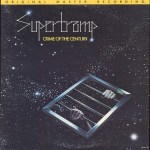
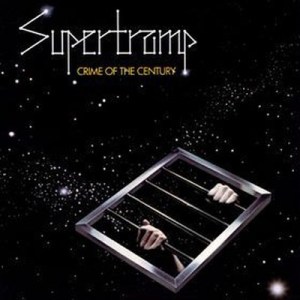


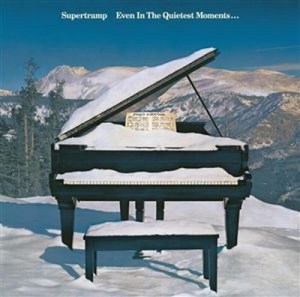

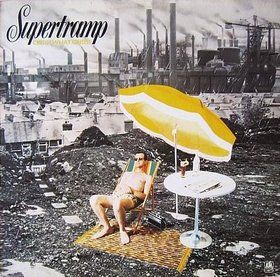
 More of the Music of Supertramp
More of the Music of Supertramp